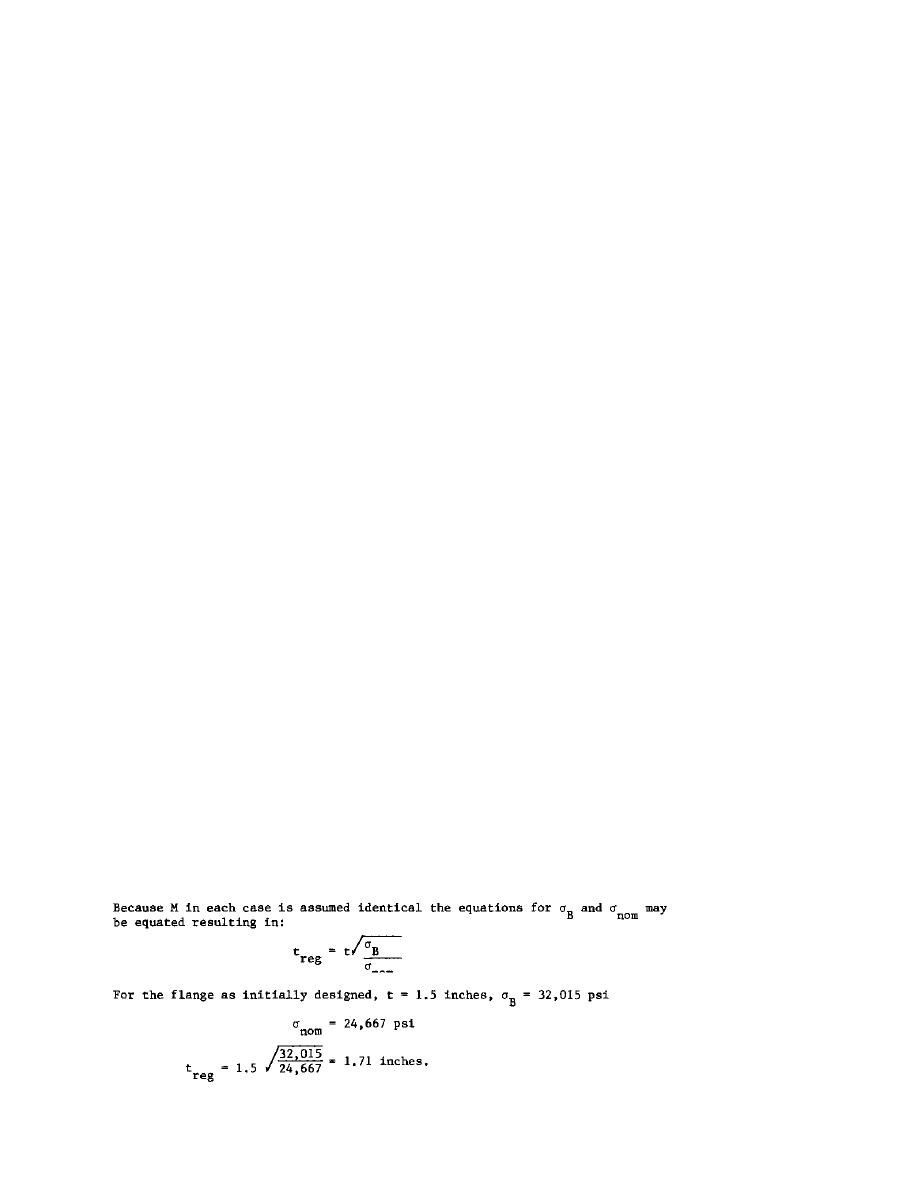
(flange) thickness. If a clamp arrangement is employed, local high spots in
either the clamp or the flange could cause such a stress concentration. In
either case, it becomes necessary to increase the thickness of flanges so as
to reduce the nominal stress to an acceptable level, Such an acceptable
stress is calculated by dividing 2 Sa by the stress concentration, K,
expected to act at the point of interest, as
2 Sa
74,000
[sigma]nom = ------- = ------ = 24,667 psi.
K
3.0
Because the stress in the flange is almost completely a bending stress, the
additional thickness required for the flange can be determined by the
relationship between bending moment, thickness and stress in a plate or
shell. This relation is
6M
----
[sigma]B = =/- t2
where
[sigma]B = the bending stress on the surface, psi
M = the moment acting in the shell at the point of interest,
in-lb
-----
in.
t = the thickness of the shell, inches.
It can be assumed that a small thickness addition to the flange will not
change the bending moment in the shell at this point. Thus,
6M
6M
[sigma]nim = --------------
= -----
2
2
(t + [DELTA]T)
treg
where
[DELTA]T = the increase in shell thickness
treg = t + [DELTA]t.
Because M in each case is assumed identical the equations for [sigma]B and
[sigma]nom may be equated resulting in:


 Previous Page
Previous Page
